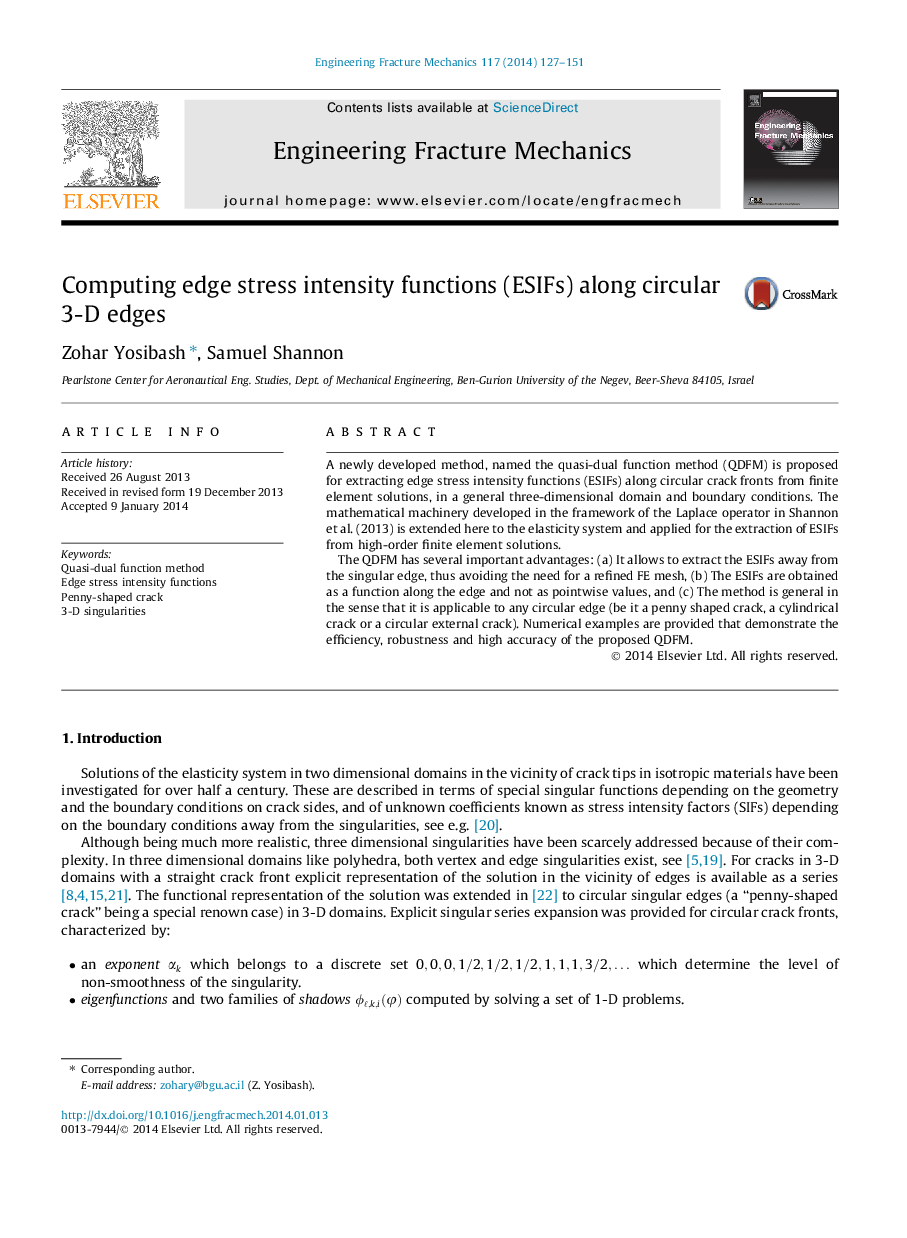| Article ID | Journal | Published Year | Pages | File Type |
|---|---|---|---|---|
| 766971 | Engineering Fracture Mechanics | 2014 | 25 Pages |
•It allows to extract the ESIFs away from the singular edge, thus avoiding the need for a refined FE mesh.•The ESIFs are obtained as a function along the edge and not as pointwise values.•The method is general in the sense that it is applicable to any circular edge.
A newly developed method, named the quasi-dual function method (QDFM) is proposed for extracting edge stress intensity functions (ESIFs) along circular crack fronts from finite element solutions, in a general three-dimensional domain and boundary conditions. The mathematical machinery developed in the framework of the Laplace operator in Shannon et al. (2013) is extended here to the elasticity system and applied for the extraction of ESIFs from high-order finite element solutions.The QDFM has several important advantages: (a) It allows to extract the ESIFs away from the singular edge, thus avoiding the need for a refined FE mesh, (b) The ESIFs are obtained as a function along the edge and not as pointwise values, and (c) The method is general in the sense that it is applicable to any circular edge (be it a penny shaped crack, a cylindrical crack or a circular external crack). Numerical examples are provided that demonstrate the efficiency, robustness and high accuracy of the proposed QDFM.
